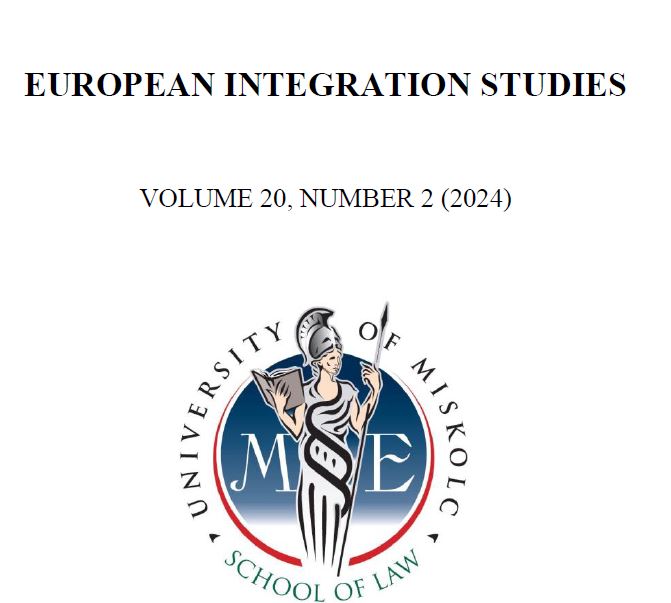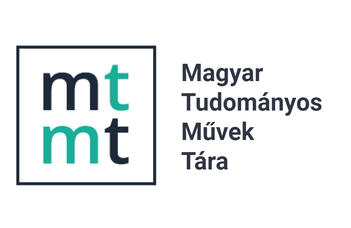Combatting Cyberwarfare Crimes in the European Union
DOI:
https://doi.org/10.46941/2024.2.16Keywords:
Cyberwarfare, Cyberattack, Defence Policy, Cooperation in criminal matters, Criminal Law, European Union.Abstract
Cyberwarfare crimes constitute a major threat to the security of the European countries. The effects of such attacks could be devastating for the European economy, stability and national security. The question therefore remains, whether the European Union (EU) has effective security measures and strategies against cyberwarfare attacks, and whether it has appropriate legal definitions of such phenomena. Furthermore, does the EU have cooperation measures and institutions for combatting such crimes? In this article we will first present the practical and legal definition of cyberwarfare and its impact on the security of the EU Member States. Then we will analyse the main security measures and strategies of the EU for preventing cyberwarfare attacks, the primary among which are the EU Cybersecurity Act, Directive on the security of network and information systems (NIS) and its second revised version (NIS 2 Directive), and the European Network and Information Security Agency (ENISA).We will continue with substantive legal documents, where the main role is still played by the Directive EU 2013/40/EU on attacks against information systems, which is now almost 11 years old and dated in some aspects. On the procedural level we will analyse the EU cooperation in combatting cyberwarfare attacks through two perspectives (cooperation measures and EU institutions). In the first perspective, we will exam the European Arrest Warrant, the European Evidence Warrant, the European Freezing and Confiscation Order, the European Investigation Order, the European Judicial Network (EJN), and the Schengen Information System (SIS). And in the second, we will present Europol and its European Cyber Crime Centre, Eurojust, and the European Network and Information Security Agency (ENISA). Although the EU has mechanisms in place to combat and prevent cyberwarfare crimes, the legal situation is still far from ideal. The main problem remains the lack of clear legal definition of cyberwarfare crimes and no focused legislation in regard to criminal prosecution of such crimes.
References
Ambos, K. (2018) European Criminal Law. Cambridge: Cambridge University Press, https://doi.org/10.1017/9781316348628.
Bernik, I. (2014) Cybercrime and cyber warfare. London: John Wiley & Sons, https://doi.org/10.1002/9781118898604.
Bussolati (2015) ‘The Rise of Non-State Actors in Cyberwarfare’ in Ohlin, J. D., Govern, K., Finkelsterin, C. (eds.) Cyber War: Law and Ethics for Virtual Conflicts, Oxford: Oxford University Press, pp. 102-126; https://doi.org/10.1093/acprof:oso/9780198717492.003.0007.
‘Europol’ in Ambos, K., Rackow, P. (eds.), The Cambridge Companion to European Criminal Law, Cambridge: Cambridge University Press, pp. 361-386.
Clough, J. (2010) Principles of cybercrime. Cambridge: Cambridge University Press, https://doi.org/10.1017/CBO9780511845123.
Digmelashvili, T. (2023) ‘The Impact of Cyberwarfare on the National Security’, Future Human Image, 19, pp. 12-19; https://doi.org/10.29202/fhi/19/2. https://doi.org/10.29202/fhi/19/2.
Klip, A. (2021) European Criminal Law: An Integrative Approach, 4th edition. Cambridge: Intersentia.
Ligeti, K., Giuffrida, F. (2023) ‘Europol’ in Ambos, K., Rackow, P. (eds.) The Cambridge Companion to European Criminal Law, Cambridge: Cambridge University Press, pp. 361-386.
Maras, M. H. (2016) Cybercriminology. Oxford: Oxford University Press.
Mitsilegas, V. (2021) EU Criminal Law, 2nd edition. Oxford: Hart Publishing, https://doi.org/10.1017/9781108891875.021.
Snider, K., Shandler, R., Zandani, S., Canetti, D. (2021), ‘Cyberattacks, cyber threats, and attitudes toward cybersecurity policies’, Journal of Cybersecurity, 7(1), pp. 1-11; https://doi.org/10.1093/cybsec/tyab019.
Šepec, M., Dugar, T., Stajnko, J. (2023) ‘European Investigation Order – A Comparative Analysis of Practical and Legal Dilemmas’ in Ambos, K., Heinze, A., Rackow, P., Šepec, M. (eds.) The European investigation order: legal analysis and practical dilemmas of international cooperation, Berlin: Duncker & Humblot, pp. 123-137.
Šepec, M., Schalk-Unger, L. (2023) ‘Special part of EU criminal law: the level of harmonization of the categories of offences listed in annex D in EU legislation and across selected member states’ in Ambos, K., Heinze, A., Rackow, P., Šepec, M. (eds.) The European investigation order: legal analysis and practical dilemmas of international cooperation, Berlin: Duncker and Humblot, pp. 203-224.
Consolidated version of the Treaty on the Functioning of the European Union PROTOCOLS - Protocol (No 22) on the position of Denmark, OJ C 326, 26.10.2012.
Convention of Cybercrime (2001), Council of Europe, CETS No. 185, Budapest, 23 Nov. 2001.
Convention on the Protection of the EU's Financial Interests and its Protocols, Council Regulation (EC, Euratom) no. 2988/95 of 18 December 1995 on the protection of the financial interests of the European Communities in relation to administrative sanctions, OJ L 312, 23 December 1995.
Council Framework Decision 2004/68/PNZ of 22 December 2003 on combating the sexual exploitation of children and child pornography, Official Journal L 013, 20/01/2004.
Council Framework Decision 2008/978/JHA of 18 December 2008 on the European evidence warrant for the purpose of obtaining objects, documents and data for use in proceedings in criminal matters, OJ L 350, 30. 12. 2008.
Council Framework Decision 2002/584/JHA of 13 June 2002 on the European arrest warrant and the surrender procedures between Member States, OJ L 190, 18.7.2002.
Council Framework Decision of 13 June 2002 on joint investigation teams, OJ L 162, 20.6.2002.
Cybersecurity: how the EU tackles cyber threats [Online]. Available at: https://www.consilium.europa.eu/en/policies/cybersecurity/ (Accessed: 25 August 2023).
Cybersecurity: why reducing the cost of cyberattacks matters, European Parliament [Online]. Available at: https://www.europarl.europa.eu/news/en/headlines/society/20211008STO14521/cybersecurity-why-reducing-the-cost-of-cyberattacks-matters. (Accessed: 10 October 2023).
Cyber Warfare, Imperva [Online]. Available at: https://www.imperva.com/learn/application-security/cyber-warfare/ (Accessed: 25 August 2023).
Digitalisation of justice in the European Union A toolbox of opportunities, COM/2020/710 final. Available at: https://eur-lex.europa.eu/legal-content/en/TXT/?uri=CELEX:52020DC0710 (Accessed: 10 August 2024).
ENISA [Online]. Available at: https://www.enisa.europa.eu/ (Accessed: 20 March 2024).
ENISA (2020) A trusted and cyber secure Europe. Brussels: European Agency for Cyber Security.
European Cybercrime Centre – EC3 [Online]. Available at: https://www.europol.europa.eu/about-europol/european-cybercrime-centre-ec3 (Accessed: 20 January 2024).
European Judicial Network [Online]. Available at: https://www.ejn-crimjust.europa.eu/ejn2021/ContentDetail/EN/2/63 (Accessed: 30 March 2024).
European Public Prosecutor's Office [Online]. Available at: https://anti-fraud.ec.europa.eu/policy/policies-prevent-and-deter-fraud/european-public-prosecutors-office_en (Accessed: 20 December 2023).
Schengen Information System [Online]. Available at: https://home-affairs.ec.europa.eu/policies/schengen-borders-and-visa/schengen-information-system/what-sis-and-how-does-it-work_en (Accessed: 10 March 2024).
The Cybersecurity Act, European Commission [Online]. Available at: https://digital-strategy.ec.europa.eu/en/policies/cybersecurity-act. (Accessed: 10 October 2023).
U.S. Army Cyber Command [Online]. Available at: https://www.arcyber.army.mil/ (Accessed: 30 August 2023).





